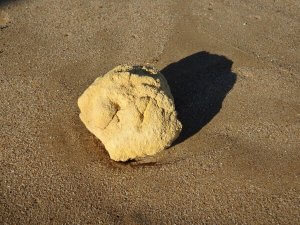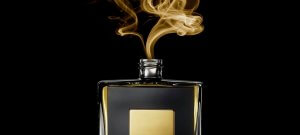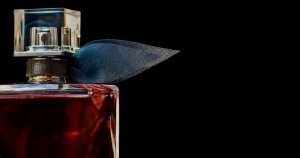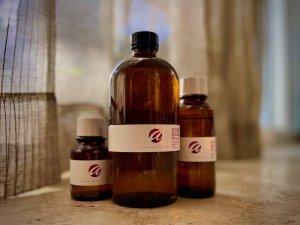Our master perfumers dive into the rich, musky, enduring fragrance of Ambergris; why it’s often referred to as “the treasure of the sea” or “floating gold” and consequently why it’s synthetic version is most often used in today’s fragrance compositions.
Ambergris is a substance that resembles a grey, pumice-like stone, and it is produced in the intestines of the sperm whale.
It occurs as a natural protection against the irritation of internal organs caused by the whale’s inability to digest the sharp, horny beaks of cuttlefish and squid that form the majority of its diet.
The nature of it formation remains unknown and it is not found in some of the sperm whale’s closest relatives; namely the Pygmy and Dwarf species.
Also known as “the treasure of the sea” and “floating gold,” ossified evidence indicates that the use of ambergris dates back more than 1.75 million years.

Early Arab civilizations knew it as Anbar, and they used it as an incense, aphrodisiac and medicine for many ailments, especially those related to the brain, heart and senses.
Today, perfume masters covet this facet, although its prohibitive cost makes synthetic ambergris a more practical choice.
For centuries, the origins of ambergris were shrouded in mystery and thought to be the product of underwater volcanoes, hardened sea foam or the droppings of large seabirds.
During his prolific travels, Marco Polo encountered sailors seeking ambergris, but he believed that whales swallowed the substance with their food.
All that changed with the advent of the whaling industry in the late 1850s, at which time the source for ambergris was unequivocally identified as the sperm whale.

Christine Brito, Portuguese historian and biologist from the University of Lisbon, believes after years of study that it was precisely the mystery surrounding the origins of ambergris that propelled its high demand. She sates, “It was a very exotic substance. The fact that people didn’t know where it came from, and that there were a lot of stories about it, increased its value.”
The Industrial Revolution, expansion of the fashion industry, rise of department stores and a greater disposable income for families brought about a consistent need for the use of whale oil, also known as baleen, the layers of which form naturally from the same type of protein found in human hair and skin.
Whale oil was in great demand for many diverse products. It served as a a lubricant which ensured the smooth operation of burgeoning factories and new machinery; an illuminant to light homes and dark city streets, and as a stiffener for umbrellas, women’s petticoats, bodices and corsets.
This unceasing clamor for baleen led to the large scale decimation of large whale populations, which only began to truly recover after the 1986 ban on commercial whaling.
While some species have rebounded, others have not and never will. This is one of the reasons why the perfume industry has come to rely on man-made synthetic variations of ambergris.

A Few Interesting Facts About Ambergris
1. The first evidence of the use of ambergris in fine perfumery dates back to Arab populations in Spain during the 10th century. Records confirm that the treasured substance was imported to Spain regularly from the Sunda Islands and the Maghreb.
2. Egyptians burned ambergris as incense, while in modern Egypt it is used for scenting cigarettes.
3. The ancient Chinese referred to ambergris as the”dragon’s spittle fragrance” because they though it to be a type of solidified spittle that dragons drooled as they slept.
4. During the Black Death in Europe in the 14th century, it was believed that carrying a ball scented with ambergris could help prevent from contracting plague.
5. At the turn of the last century, ambergris was traded throughout Europe and often weighed with gold.
6. Barely 1% of all sperm whales secrete ambergris, and its rarity accounts for its prohibitive cost as a raw material for perfume. In England in 2013, a 6 1/2 pound block was found, and its value as estimated at more than 100,000 euros (1,046,419.34 US Dollars).
7. During the 18th century, ambergris was favored more than animal musk in perfumery. Its was also used in chocolate for its invigorating and aphrodisiac virtues.
8. In England during Elizabethan times (1600s), ambergris as well as other fragrant substances were often used to scent gloves and sachets.
9.The name, ambergris, derives from the French, meaning “gray amber.” This is to distinguish it from amber resin that derives from fossilized tree sap and is also found on beaches.
10. Some shores along which ambergris has been found include: New Zealand; SriLanka; Brazil; Somalia; Kenya; Mozambique; Madagascar; The Bahamas and Indonesia.
Ambergris As A Perfume Ingredient
Chemically, ambergris is an amalgam of a variety of alkaloids, acids and an odorous compound known as ambrein, which is extracted from ambergris and then ground into a powder and dissolved in alcohol.
This has always served as a powerful fixative that significantly increased the life span of a fragrance.
Its perceived ability to elevate other olfactory notes is highly prized by the master perfumers. Its one-of-a-kind musky character adds enduring scent to essential floral oils.
As an animal pheromone, it is an aphrodisiac that works well with natural perfume oils such as: warm, smoky and musky oudh; velvety sandalwood; dreamy, passionate rose and haunting, intense jasmine.

Ambergris perfumes are in constant demand for their unique sweet, leathery, and marine-like character.
According to biologist, Joerg Bohlmann: “Compounds like ambergris are able tor retain fragrance on the skin in complex form over a long period of time.”
For centuries, perfumers have categorized the quality of ambergris according to its color. Ambergris naturally occurs in several hues that range from black to pure white, with the latter being more sought after by perfumers because it contains the most ambrein.
Between black and white, the colors can range from grey to brown. One of the reasons its description is so elusive is because oxidation and exposure to sea air for long periods of time can alter the nature of ambergris.
It can float for many years, even centuries, before being discovered, and experts believe that its ultimate quality is determined by the length of its exposure to sea air.
Due to the environmental protection of the whale, and the cost of ambergris, synthetic chemicals have replaced ambrein in all but a few of the most expensive perfumes.

Three examples are the very old Mitsouko by Guerlain, the more recent Ambre Nuit by Dior and Fleurs de Bulgarie by Creed, which was was originally created in 1845 for Queen Victoria who was said to have worn it all the time.
In the perfumes of the past, the inclusion of ambergris symbolized a bold dash of elan, intrigue and sexual arousal.
It replaced the once more popular musk, which was unforgettable and sexy, but also unmistakably animal and fecal in character.
Other animal extracts used in perfumery besides ambergris and musk, which derived from the sheath of the musk deer were civet, which was extracted from the anal glands of the civet cat and castoreum from the sacs of beavers.
The User Of Synthetic Ambergris
The alternative to natural ambergris is a compound called ambroxan, (also known as ambroxide and ambrox), that was developed in 1950.
It is a naturally occurring substance in ambergris that is synthesized from an enchanting molecule known as Sclareol that is naturally extracted from the essence of the Cary sage plant and is known for its warm, inviting leathery and spicy facets.
For master perfumers, this is a safe and sustainable option that is kind to both the environment of planet Earth and the whales that swim in its mighty oceans.
Alpha Aromatics and A Few Recently-Composed Formulations
We are a renowned, family-run perfume design and fragrance supply company specializing in fine customized perfumes and fragrances that are found in a multitude of scented products, including but not limited to personal care products, household cleaning solutions, candles and diffuser oils and much more.

Below are a few of our most-recently composed fragrances containing ambergris, which we are equipped to supply to clients in pales, drums and totes.
Sea Salt Pomelo
This fragrance opens with a stream of facets energized by the eternal majesty of the ocean.
Head notes of acidic, aromatic citron, sugary, fresh and spicy bergamot, clean, sharp marine-nuanced pomelo and ozonic sea salt soon merge into a redolent heart note featuring narcotic, intoxicating jasmine, dusty, woody violet and sensual, green sea moss.
A robust dry down marked by aspects of sun-kissed, ozonic driftwood, erotic, passionate musk and earthy, sugary and almost creamy ambergris completes this heady fragrance.
Amber And Vanilla Blossom
This Alpha Aromatics fragrance represents an aromatic harmony between woody resins, floral and spicy elements that include: warm, dark amber, lush, noble vanilla and fruity facets of potent, leathery blackberry and succulent orange.
A floral heart note ultimately folds into a dry down of creamy sandalwood, earthy musk, rich, caramelized vanilla and lingering, sweet, resinous ambergris.
In Conclusion
If you have a product that needs some rebranding, and you’re seeking something unique, edgy and yet utterly beautiful and mysterious, call our teams today and let us create a treasured, one-of a kind ambergris-inspired fragrance for your product line today!
Photo Credits: Shutterstock and Pixabay
 alpha aromatics®
alpha aromatics®